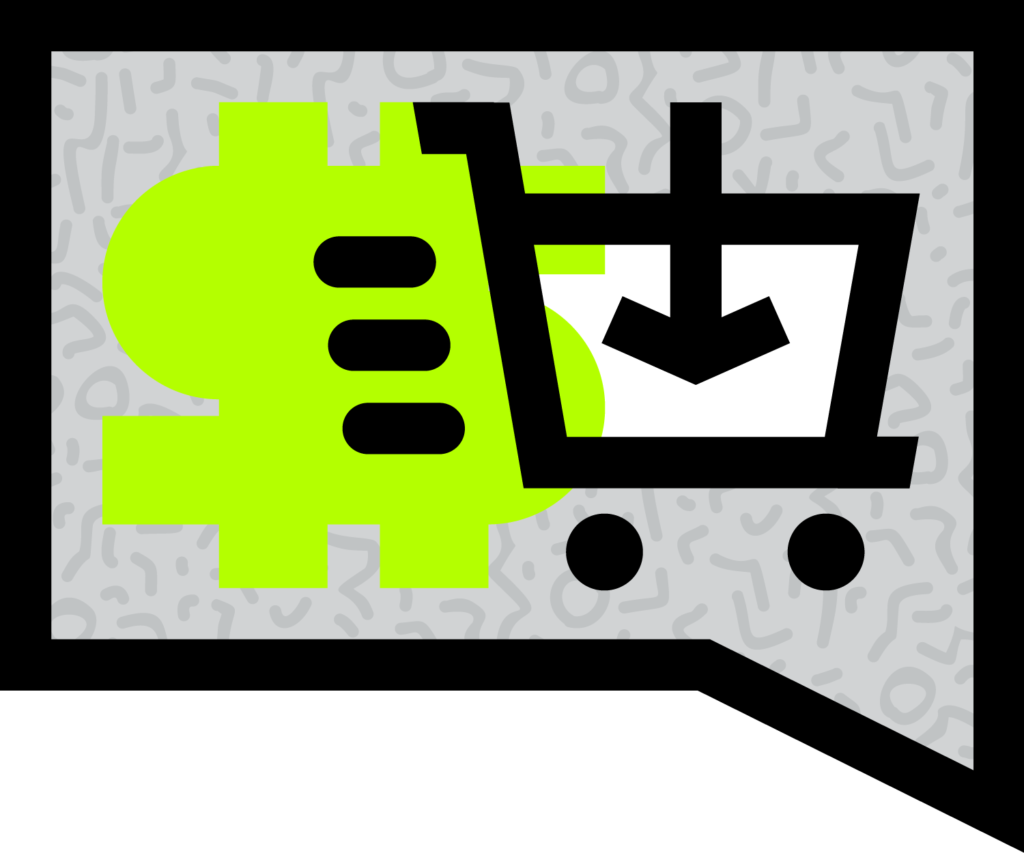Selling beyond your four walls takes more work than adding woo-commerce to your WordPress site or setting up Shopify. While one of those is probably your best choice for facilitating online sales, it’s just the start.
We’ve compiled a checklist of what to do when you have an amazing product and want to get traction with online sales.

1. Think long and hard about how you sell your product in person and who is buying it.
Like any good salesperson, you’ve got a good idea the moment someone walks through your front door if they are likely to buy. It’s not wrong to make that instant judgment, it’s based on your experience and knowing who your ideal customer is. There’s also the awkward body language of those who are clearly shopping for a gift and look like a fish-out-of-water.
Use your instincts and wealth of product knowledge to kick off this e-commerce planning. The journey from the front door of your store to leaving with a bag full of products is not unlike the online buying experience. Translating what each part of your sales process looks like on a website is the hardest part.
How you greet a customer is similar to your homepage – if they walk in the front door.
How you greet someone who came in and directly went to a certain product is like someone coming to your website and the product page was their first impression.
Both of these are good examples of how you adjust on the fly based on what you’ve immediately learned about the customer.
For example, one way to think of retail sales is that you have the opportunity to close the sale T.O.D.A.Y:
- Talk with your customer
- Open-Ended Questions Before Close Ended Questions
- Demonstrate Product Fit
- Ask and Automate the Sale
- Yesterday is Gone. Focus on Today and Tomorrow
This framework is designed to capture what good salespeople are naturally doing on the sales floor; getting to know customers by asking the right questions and suggesting the solution that is the right fit. The closing comes naturally, all based on the fit and how it will be beneficial for the customer.
Getting this in-depth will set you up for success online, and it might just make your sales process better in your store, too.

2. Create a Massive List of Product Features, Benefits & FAQ That Are Relevant to Making a Sale.
Frequently asked questions (FAQs) are helpful for people who are considering a purchase and for those who already own your product. Yes, before and after the sale, FAQs are really great. It can seem a little daunting at first to try and uncover all of the possible questions, however, you can build this over time.
Here are a couple of tips to help jog your memory:
- Look back through your sent items in your email and save any of the responses you’ve answered more than once.
- Think of your last sale in your store. Specifically, remember the details that the customer paid attention to.
- Think back to the last person who didn’t purchase in your store after a good interaction – what objections weren’t you able to be overcome or what specifics were they looking for?
- Go way back to when you first saw the product, what you were pleasantly surprised about and what gave you joy about the product.
Keeping in mind that most people will be introduced to the product through your site, what first impression do you want them to have? What lasting impressions and takeaways should they have, even if they don’t buy?
Those two questions will guide you through your FAQs to build a strong brand online.

3. Invest in Good Product Photography & Possibly Video. Complement it With a Great Description.
Overcoming the missing senses like smell, touch, feel and sight can be difficult for some products. Yes, sight was included because some people will always need to “see it with their own eyes to believe it.”
However, for most people, you can create a compelling product page that sells by having excellent photos and videos that explain your products and showcases their features. You can often overcome most people’s hesitation to buy with good visuals and a great description that lists out the benefits (reasons to buy) that your product offers.
Both visuals and text should be created with the target audience in mind. The way you write can connect with your target audience based on the problems or solutions you identify in your text.
The photo and video can set the stage for your ideal customer’s lifestyle. Putting yourself in their shoes and creating the way they will experience or use your product can be challenging, but is worth the effort (and it’ll show with your conversions and sales).
4. Get a good email software to help you out and Build your List.
Email isn’t dead. In fact, there is still a huge value in delivering a message directly to someone’s inbox. It’s a low-cost activity since you don’t need to have an advertising budget to reach people. The hard part is building the list.
Your email subscribers should be a mix of past customers and qualified leads or prospects. Obtaining an email as part of an order is very straight forward, that’s their primary source of updates for order confirmation, tracking, followup reviews or customer service. Having a reason to get prospects into your database (so you can email them) is different for each business, and it usually depends on how much effort goes into decision making. Here’s a simple rule to remember:
The higher the price point (in the category), the longer a customer will take to research and decide to buy.
This creates a challenge for both price leaders (low prices) and premium products (high prices).
If you are a price leader, you are typically experiencing pressure to lower prices as customers are buying based on the lowest price and will shop around. This means they will leave your site. And they can’t buy unless they are on your site.
Incentivizing prospects here could be:
- Instant savings emailed to you (email them a coupon code)
- Have a pop-up promotion that is unique to your site, like a gift with purchase or a bundle deal
- Follow you on social media for a coupon (super concept, a couple of tools can put this in place)
- Join our email list for exclusive offers (note – this one doesn’t require a discount ?)
If you have a premium product, customers are taking their time to do the research because you have something that’s considered a major purchase, or they might be deciding to buy it for the first time. This might require a lead nurture sequence that warms them up to the purchase by further explaining features, benefits and examples.
All of these lead nurture sequences are perfect for email so each point can be shared individually:
- Learn how to get the most out of our product
- See how many ways you can fix this issue
- Here’s a cheat-sheet to solve a problem
- Get the latest tips and tricks for reaching this goal
The language is much different, and interested prospects are qualified enough to want that info. You’ve addressed a need or a problem to solve and not only does your product help, but you are also a source of knowledge, too.
After you have an established and growing list, take the time to plan out your messages. Have a regularly scheduled message that doesn’t always need to focus on sales.
Connect with your audience (past and future customers) by offering information, posts, and other things that they will appreciate. In turn, the favourable opinion that is built will create trust when they need to make a purchase.
5. Have a budget to find your customers.
Much like the store you currently operate in took some capital to get noticed, you’ll need to have a budget in place for advertising. Not all advertising is created equal, nor are eCommerce categories.
Understand your competitors and see where there are opportunities for you to compete, or places that are under-served. You can make those “riches in the niches” by being more focused on product selection and audience targeting. By finding the right products to advertise, there’s a greater likelihood that someone will come to buy, and then you can focus on the repeat purchase.
Speaking of making sales, get very familiar with the terms CAC and LTV. These metrics will be your friends, giving you an idea of how much it costs to acquire a customer (CAC) and the lifetime value (LTV) of a customer. If you already run a physical location, you can calculate your LTV based on existing customers.
CAC and LTV are not focused primarily on eCommerce; any industry can use these calculations for getting new customers, and once applied against how much that customer is worth (overall, not just the first transaction), you can understand the return on advertising spend (ROAS).
Industry averages vary for these three metrics, however, all look better if you can increase your lifetime value. If there is one main focus to your efforts online, it’s finding the customers who will purchase on a regular basis. Whether it’s recurring orders or buying different things, you’re winning most by increasing LTV.
Enough with the acronyms and calculations, on to #6… unless you want to calculate them, click here.

6. Where can you fulfill to ensure a great unboxing experience?
We love unboxing, it’s like Christmas, but it always comes a few days after you order something. Just like Christmas morning, there are some presents that are awesome and some that no matter how cool, were pretty boring to unwrap. Let’s stay in the exciting camp – your customers should be thrilled when your product arrives.
To make this a reality, start with a smaller serviceable area for your advertising. If you look at any of the major companies, how far can you get on standard service (cheap) in a day or two (super fast)? This keeps the wait time down for your customers and keeps shipping low. Once you can scale up your orders to get healthy discounts, then you can expand with a better service level and fulfillment time.
Beyond getting there on time, make sure it’s arriving at your customer in one piece and it great shape. Already knowing that your shipping it for less time and to a limited location helps, but good quality packaging not only will help impress your customer, it will also reduce potential damages. Damages are a big problem, they lead to potential returns and replacements. Most customers are very understanding, but it is still an inconvenience. Do what you can to be proactive.

7. Know how much you can scale.
The worst possible word after you’ve spent all of this time, energy and advertising to get someone to your site is backordered. You know there is more product coming, but people often won’t wait. Sometimes you can win them back with the right offer, however, online shopping is about convenience and backorders are a big inconvenience.
Understanding your inventory levels and how quickly you are going to sell through a particular product should dictate a lot of your marketing decisions. Some of this is based on common sense – don’t sell what you don’t have. While others are about just-in-time inventory and maximizing the warehouse space required to keep your product on hand.
Amazon FBA is a great way to leverage a third-party for storage, pick, pack and logistics, however, you need to know this math to ensure you aren’t overpaying and eroding your profits.
Get started, If It’s The Right Fit.
If this seemed overwhelming, you’re not alone. Starting your online store properly can be a big task. It’s a great opportunity to have more than one serviceable area, with the right people in place.

Do a quick analysis to see if the upside of worth it before you start setting up your store. Just like a boarded-up retail store that never saw the light of day, you don’t want to have your online shop being an empty shell.
Now for the shameless plug: Our E-Commerce Marketing & Fulfillment Packages

If you need a hand or want more advice, we’re here to help with setting up, optimizing and marketing your online store with our e-commerce solutions. Our team is the bread to your e-commerce sandwich. We focus on the customer side of your transaction; getting them interested in purchasing and giving them a great unboxing experience. Click here for more info.
- The Logical Rise of Affiliate Programs – It’s a Referral! - December 29
- How Companies Pivoted In 2020 - December 22
- Helping You Achieve Your Business Goals - December 18

